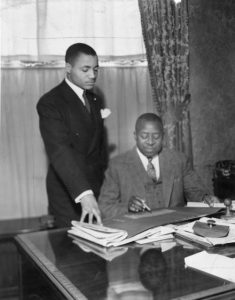
Robert Sengstacke Abbott (seated) and his nephew John H. Sengstacke in the Chicago Defender offices, 1930s.
On May 5, 1905, Robert Sengstacke Abbott founded the Chicago Defender with an initial investment of 25 cents and a press run of 300 copies.
Five years later, the Chicago Defender began to attract a national audience and had a major influence on the Great Migration, culture, and the struggle for civil and human rights. Here is a description from the Black Past:
Abbott used the Defender as a forum to attack racial injustice from the outset, and included a front-page heading on every issue that read, “American Race Prejudice Must Be Destroyed.”
The Defender was a leading advocate in the fight against racial, economic, and social discrimination. It championed equal employment and fair housing for African Americans, and boldly reported on lynchings, rapes, and Black disfranchisement.
The Defender, however, saw its major growth during the Great Migration and is credited as being a major catalyst for that movement of half a million Black people from the South to the North between 1915 and 1920. Continue reading.
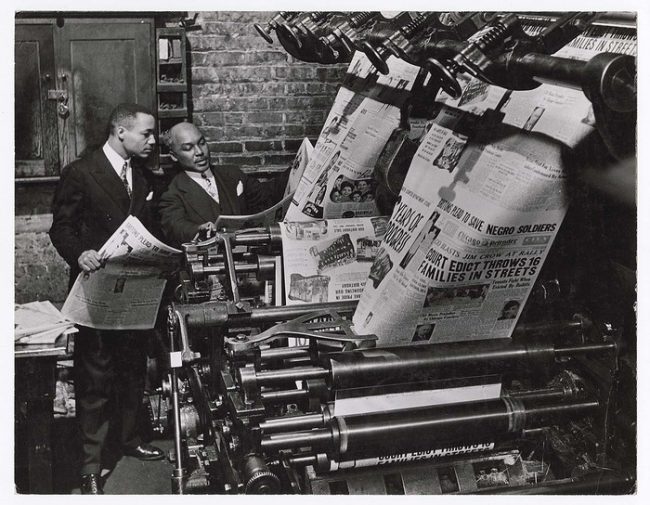
John Sengstacke and Charles P. Browning checking copy fresh from the printing press at the Chicago Defender, 1944. Source: Gordon Coster, LIFE Magazine Collection, 2005
The Equal Justice Initiative adds:
Following World War I, the Defender covered the 1919 nationwide “Red Summer” race riots from the Black perspective.
At a time when the overwhelming majority of news outlets were white-owned and biased in favor of white supremacy, racial hierarchy, and the status quo, the Defender was one of the most prominent Black outlets giving voice to the experiences, realities, and discontent of Black Americans throughout the country, sometimes serving as the only documentation of incidents and attacks that local Southern papers refused to report. Continue reading.
Learn about the central and vital role of the Black press in the excellent California Newsreel documentary, The Black Press: Soldiers Without Swords, produced by Stanley Nelson.
Read about the history of the paper in The Defender: How Chicagos Legendary Black Newspaper Changed America by Ethan Michaeli.
Learn more about the 20th century Black press in News for All the People: The Epic Story of Race and the American Media and other resources listed below.

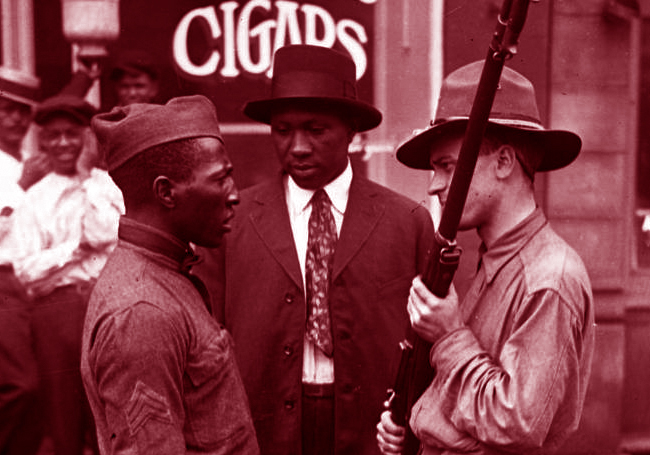


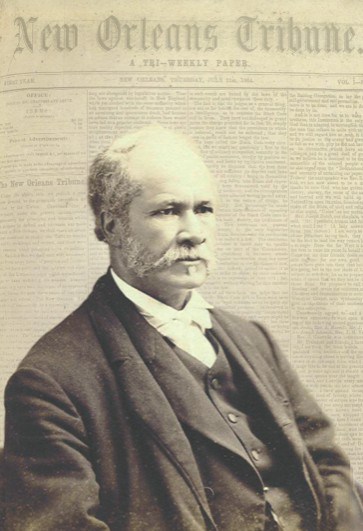


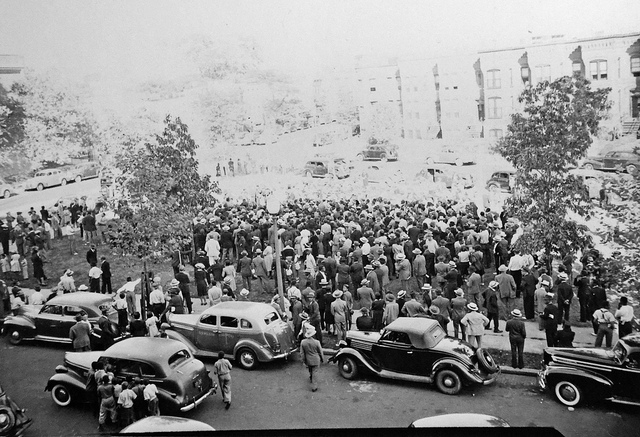





Twitter
Google plus
LinkedIn